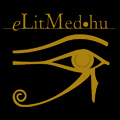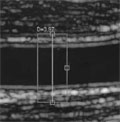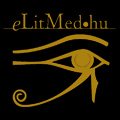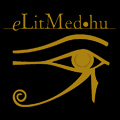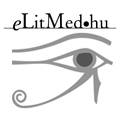The eLitMed.hu medical portal uses computer cookies for convenient operation. Detailed information can be found in the Cookie-policy.
Lege Artis Medicinae - 2002;12(08)
Content
[Atypical forms of the gastroesophageal reflux disease]
[There is growing interest in the gastroenterology literature towards gastroesophageal reflux disease (GERD) these days. The prevalence of the disease is much higher than estimated earlier and it frequently appears in atypical forms. Literature data suggests that 30-40% of the individuals suffer from gastroesophageal reflux disease. A broad spectrum of presentation of gastroesophageal reflux disease exists, e.g. noncardiac chest-pain, ear-nose-throat symptoms, pulmonary symptoms, dental erosions, chronic cough and hiccups. Atypical forms often cause diagnostic and treatment difficulties. Authors analyze the frequency, morbidity and the pathomechanism of the extraesophageal manifestations, based on self-experience. The main goal of the review is to help to establish the diagnosis of GERD, to recognize its atypical signs and to outline the diagnostic steps to be taken. Most up-to-date treatment strategies are also presented. By the demonstration of interesting cases, authors emphasize the diagnostic importance of intragastric pH-monitoring.]
[The importance of endothelial dysfunction and possibilities of its treatment in chronic heart failure]
[Endothelial cells - under autocrine and paracrine control - may have a central role in the regulation of vascular tone. Endothelial dysfunction is a very early sign of heart failure but the clinical consequence is not well understood. Recent evidence suggests that upregulation of the neuro-endocrine-, and the renin-angiotensin-aldosterone system would lead to increased tissue- and circulating angiotensin-II levels. Elevated concentration of angiotensin-II provides a mechanism by which vasomotor responses to nitric oxide, prostaglandins are blunted, while the effects of vasoconstrictors such as thromboxans, endothelin and chatecholamins are enhanced. The higher basal vascular tone leads to the degeneration and atrophy of skeletal muscle, moreover to the the ischaemic damage of myocardial cells. Because renin-angiotensinaldosterone system is under genetic control, the deleterious effects of angiotensin-II depends on the angiotensin-converting enzyme gene. Pharmacological attempts to counteract endothelial dysfunction in heart failure may include the angiotensin-converting enzyme inhibitor, which can potentially improve the endothel dependent vasodilatation response. The importance of measuring endothelial function by non-invasive techniques is yet unknown, thus, before we introduce the widespread testing of patients for endothelial function, more research has to be done.]
[Gestational diabetes mellitus and neuropathy: examining the relationship]
[BACKGROUND - Little is known about the relationship between gestational diabetes and late diabetes complications. The relationship between these abnormalities was investigated in this study. PATIENTS, METHODS - Besides reclassification of their glucose tolerance, the prevalence and correlating factors of diabetic neuropathy were evaluated in 123 gestational diabetic (GDM) women controlled prior by our team during their pregnancies. 26 pregestational type 2 diabetic patients served as controls. Mean follow-up time was 7.2 years. Vibration perception threshold was measured to diagnose peripheral neuropathy, while cardiovascular autonomic neuropathy was evaluated using the battery of four cardiovascular reflex-tests. RESULTS - From 123 prior GDM women, 63 were characterized as having diabetes (52.9%), while 14 had impaired glucose tolerance (11.8%). Peripheral neuropathy was diagnosed in 23.6 %, parasympathetic neuropathy in 37.4 %, while sympathetic neuropathy was confirmed in 7.3 % of the patients evaluated during follow-up visit. Association between abnormal glucose tolerance and neuropathy was statistically significant only in the case of parasympathetic neuropathy (p=0.0001), and this relationship was independent from elevated BMI, microalbuminuria and the higher rate of hypertension observed in these women (p=0.006). Since the number of abnormal neuropathy tests were also higher than expected in women with normal glucose tolerance, we hypothetised a cross-sectional link between neuropathy and insulin resistance. An additional analysis comfirmed this association between insulin resistance and parasympathetic neuropathy independent of metabolic status of these patients (p=0.005). CONCLUSIONS - The importance of gestational diabetes, which is sometimes underestimated by many clinicians, was highlighted by our study since it projected a high frequency of parasympathetic cardiovascular neuropathy in these patients. This form of diabetes not only projects the development of late onset type 2 diabetes, but could also act as a predictor of late diabetes complications. According to our results diabetic parasympathetic neuropathy may be linked to type 2 diabetes/ insulin resistance syndrome, and could play a role in the excess cardiovascular mortality observed in these patients.]
[Changes in the hormonal therapy of breast cancer patients]
[The hormonal therapy for breast cancer patients seems to be changing. At present the new, third generation aromatase inhibitors are the standard second line therapy for postmenopausal, receptor positive advanced breast cancer patients. Currently, tamoxifen (TAM) stands as the ”gold standard” first line therapy, with ist role changing, due to the aromatase inhibitors which seems to be more effective than TAM and have less side-effects. For these reasons, aromatase inhibitors may be useful in the adjuvant setting, but long-term side-effects are not yet known. In the next few years, sufficient experience will be gained with these drugs which might help us to change practice. Pure antioestrogens are also promising new drugs. Recently, the LHRH analogues were the preferred drug of choice in premenopausal women, in contrast to surgical or radiological ovarian ablation. All receptor positive breast cancer patients should receive hormonal therapy, regardless of age, menopausal status, node status, tumour size, but we should avoid hormonal therapy for the endocrine nonresponsive patients.]
[Quality assessment in the management of acute coronary syndromes]
[INTRODUCTION AND METHODS - Quality monitoring activities are essential for improving the care of acute coronary patients. The aim of our study was to establish a registry and assess the adherence to widely used quality indicators. We investigated two groups of patients, those admitted to our Intensive Care Unit with the diagnosis of acute myocardial infarction (Group 1) and unstable angina (Group 2). RESULTS - Group 1. consisted of 173 patients, of whom 60% was eligible for thrombolysis. In 5 cases no acute reperfusion therapy was done. For reperfusion we used systemic thrombolysis in 74% and primary coronary angioplasty in 26%. The prehospital delay was 150 minutes, the ”door-to-needle” time and the ”door-toballoon” time were 30 minutes and 102 minutes, respectively. 95% of the patients received aspirin, 79% beta-blocker, 82% angiotensin converting enzyme inhibitor and 39% cholesterol lowering medications. Group 2. included 84 patients, most of them had high risk features according to the Braunwald classification and the American College of Cardiology, American Heart Association guideline. Coronary angiography was performed in 80 cases. Regarding revascularization, 43 patients underwent coronary bypass surgery, 30 percutan angioplasty with stent implantation in 18. In this group aspirin was given in 82, unfractionated heparin in 9, low molecular weight heparin in 49, glycoprotein IIb/IIIa inhibitor in 15 cases. 21 patients received intravenous nitroglycerin, 70 patients betablocker and 57 patients cholesterol lowering drugs. DISCUSSION - Quality management is extremely useful in assessing our practice, our shortcomings and developments.]
[Physicians’ attitudes and suppositions in 2001 in the Polyclinic of the Hospitaller Brothers in Budapest]
[INTRODUCTION - Following the total socioeconomic changes in Hungary in 1989, no scientific analysis has been made about physicians' religious attributes in the new circumstances. These attributes, after four decades of political anticlericalism may affect essentially the ideological and socio-economic patterns of medical professionalism. Hungary’s 2001 census favoured such an inquiry, since it went back to the traditional questions about religious affiliations. METHODS - The ”sensitive” questions ot the census were accepted without any obstacle in the whole population and backed up the present study together with the newly established religious atmosphere in the hospital of roman catholic Hospitaller Brothers of St. John of God, which was reopened on the 1st of July, 2000. The collection of data started in November 2000 ending in December 2001. All 98 full time employed physicians participated in the inquiry carried out by personal interviews guided by the same 51 questions. Following more than half a century span, the aim of the present study was to gain measurable information about the doctors’ unknown religious affiliation and its impact on clinical problems with ethical dimensions. RESULTS - All the doctors cooperated willingly in face-to-face interviews. There was a high proportion of religious affiliation (83 persons out of 98) without any sign of mysticism in the professional values. However, the pre-eminent role of psychological factors in the healing process was stressed, opposed to the simplified materialism of medicine. The same ideological pattern was represented while ranking other professions in the social hierarchy. No physicians experienced a conflict between their religious belief and professional activity in the dayto- day service. CONCLUSION - According to the extremely underpaid medical profession in Hungary, doctors of the new hospital do not believe that now they should tolerate their underpaid status as altruistic missionaries. However, they know exactly that balancing professionalism and business of medicine, is not a task for a single hospital but an urgent one of the whole society.]
1.
Clinical Neuroscience
[Headache registry in Szeged: Experiences regarding to migraine patients]2.
Clinical Neuroscience
[The new target population of stroke awareness campaign: Kindergarten students ]3.
Clinical Neuroscience
Is there any difference in mortality rates of atrial fibrillation detected before or after ischemic stroke?4.
Clinical Neuroscience
Factors influencing the level of stigma in Parkinson’s disease in western Turkey5.
Clinical Neuroscience
[The effects of demographic and clinical factors on the severity of poststroke aphasia]1.
2.
Clinical Oncology
[Pancreatic cancer: ESMO Clinical Practice Guideline for diagnosis, treatment and follow-up]3.
Clinical Oncology
[Pharmacovigilance landscape – Lessons from the past and opportunities for future]4.
5.




